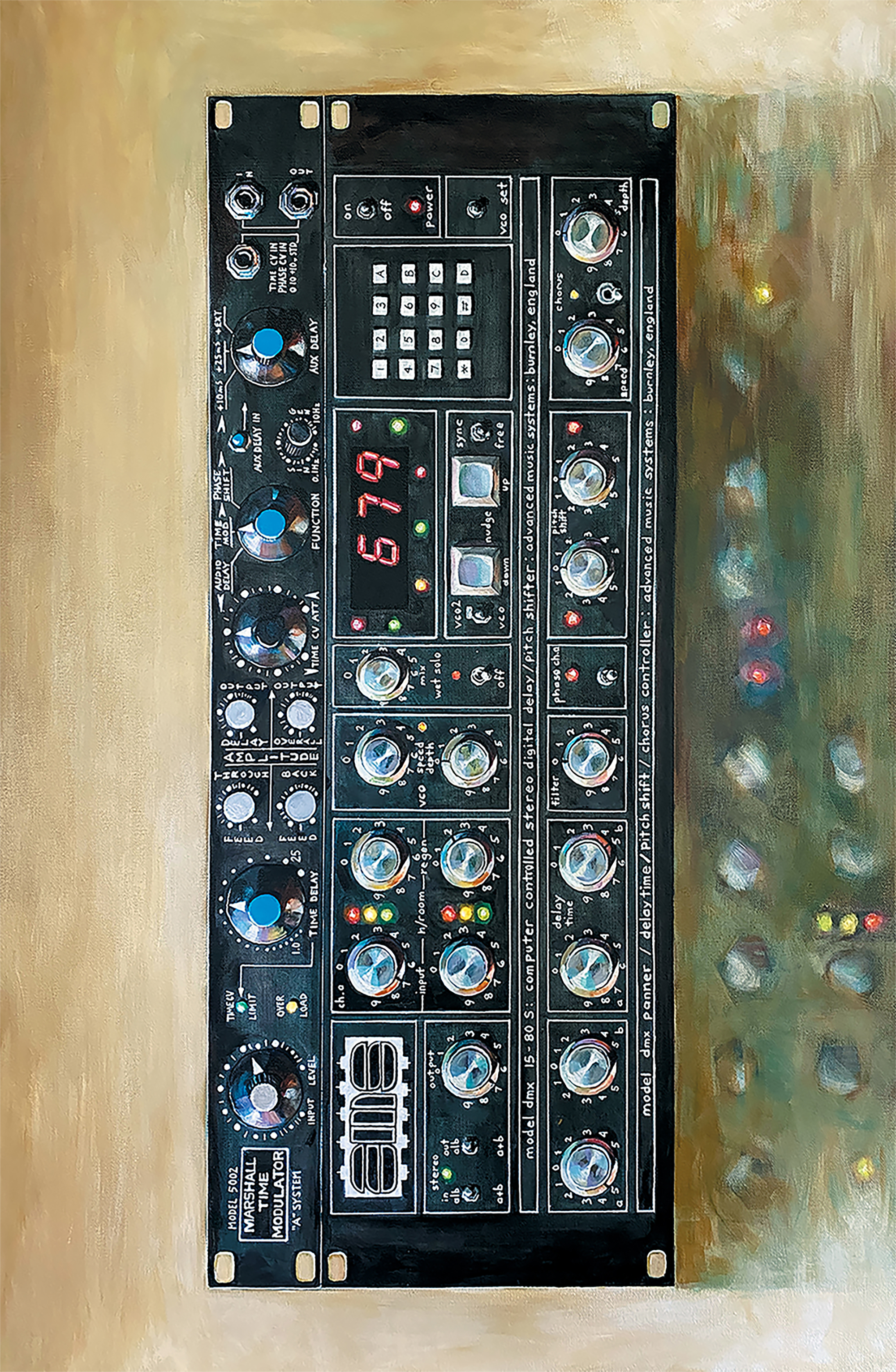The Carnaby 500 is a groundbreaking audio processor. Hands down, this device is stunning. At first glance, it looks like a three-band EQ – which it kind of is – but it's not like any equalizer I've touched before. When you boost a band, you're only boosting saturation. When you attenuate a band, you are attenuating, but also simultaneously adding saturation to fill the space. While the three-band EQ interface is intuitive, making this device a quick learn, in practice this is a very different tool than an EQ. Even when I ham-handedly turn the knobs to their full extreme, the effect can feel subtle until I level match and toggle the bypass switch. A/B'ing the bypass switch generally causes every eyebrow in the room to jump all the way up. There's some wild sorcery inside that's the perfect "gentle hype" for nearly anything.
More than just the sound, the entire design feels groundbreaking. Here's a feature that's so cool it almost deserves its own review: OPTOSYNC. Behind the faceplate, on the left side of the circuit board is a light detector that reads a digital signal from an LED in the neighboring unit to the left. When you enable the OPTOSYNC switch, every control goes dead while each setting is matched precisely to the unit on the left (and you can sync multiple units this way). Instant stereo matching and no need for a link cable. Even the bypass switch just passes the setting thru instantly.
The first thing I tried this on was a stereo piano signal. I boosted the low band around 100 Hz and the left hand suddenly felt deeper (without getting muddy). Then I attenuated 1 kHz to make space for the vocal, which sounded great and not at all scooped because the saturation compensates for any cuts. I topped it off by boosting a high shelf set to 5 kHz, and even pushing it this far felt soft and shimmery. Again, all of this felt subtle until I toggled the bypass and realized how much more "finished" the piano sounded. Next I tried a bass guitar, which I had already boosted significantly around 100 Hz. It felt full, but overly resonant. Setting the low band around 200 Hz with some gentle attenuation helped the instrument feel more balanced without giving up any body. If anything, it sounded fuller without taking up as much real estate. My absolute favorite was inserting it on my drum bus. Again, I attenuated the low end to tighten the bottom without losing any sense of depth, but boosting the high band was incredible. The drums felt brighter and softer at the same time, but never harsh. The high band manages to bring out a ton of tone without feeling like it's running out of headroom.
I'm really impressed with the build quality. The knobs provide a satisfying texture as you turn them, and the whole box feels like it should cost twice as much. In truth, you're going to want to buy a pair, so maybe this is a perfect price point. This is my first experience with any gear from Cranborne, but I'm impressed with the clever approach to audio gear. Their designs feel timeless while also giving the impression that maybe somebody shipped this to me from the future.




_disp_horizontal_bw.jpg)